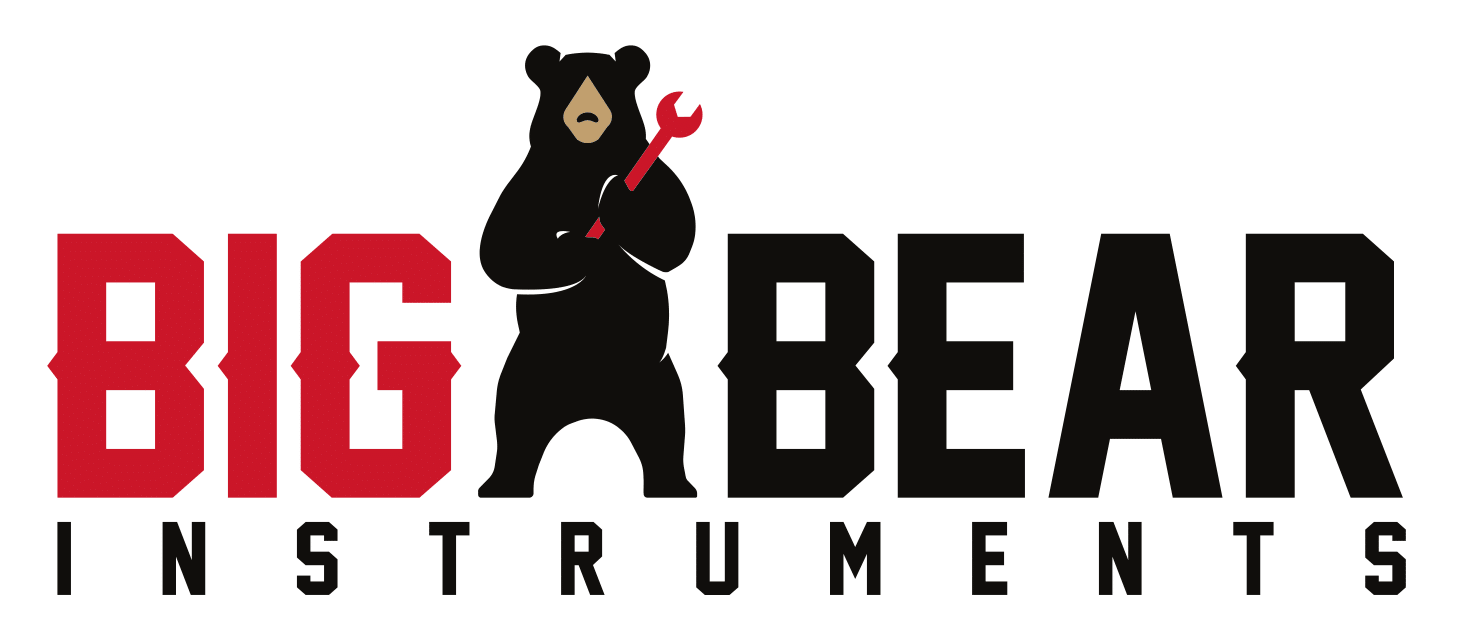So you’ve figured out what size dial and connection you need on the gauge for your application. You even know your preference on wetted materials. But what about having the gauge dry vs. liquid filled? What are the benefits to a liquid filled gauge? Are there any negatives? Believe it or not, determining this feature can be puzzling for many customers. Be confused no more – Big Bear will explain everything you need to know about why a gauge is liquid filled.
To put it simply, liquid filling a pressure gauge is strictly used as an inexpensive way to steady the needle and lubricate the internals of a gauge during applications with vibration. The most common fill fluids used are Glycerin and Silicone. Glycerin is used in around 95% of all liquid filling applications and is typically the “standard.” The reason these fluids are used is because they’re more viscous and their thickness helps keep the needle steady. Some gauges come dry but can be filled simply by filling the hermetically sealed gauge case through the fill port (usually at the top) and then reinserting the fill plug when finished.
As with any decision making, you should outweigh your pros and cons when deciding what’s right for you. Let’s break that down for you here:
Benefits of a Liquid Filled Gauge
- It steadies the needle. Without liquid filling the gauge, the needle would bounce erratically making it difficult to pinpoint where the needle is exactly pointing on the gauge
- It’s an inexpensive solution and in many cases comes standard on a gauge
- It helps increase the life of the gauges by dampening as well as lubricating the mechanical parts of a pressure gauge
Negatives of a Liquid Filled Gauge
- Discoloration (darkening or yellowing) of glycerin over time due to exposure of UV rays or extreme temperature changes
- Standard Glycerin is really only good down to 20 degrees Fahrenheit. It is not recommended for cold environments
- Risk of leakage
- Pressure can build up in the case due to expansion and contraction of fluid from temperature changes (usually small, 1 PSI or so) affecting the accuracy of the reading as well as bring the needle off of zero
While some of these negatives can seem like deal breakers, there are easy solutions to these issues. We’ll start with discoloration. If potential discoloration is a concern, instead of choosing Glycerin, go with Silicone. Silicone has a bigger temperature tolerance and is not as easily affected by UV rays. Because of this, Silicone tends to keep its color longer than Glycerin.
If your application has very low temperatures of 0 degrees or below, Silicone or a mixture of Glycerin and distilled water can be used instead of pure Glycerin. Both of these fluids will allow for lower temperatures down to -40 degrees Fahrenheit.
As for leakage, this is always a risk with liquid filled gauges but the risk is very low. The chance of leakage depends on the quality of the gauge you’re using as well as the application. If your main concern is leakage, to decrease risk, use a crimped bezel type instead of a bayonet due to the crimped bezel holding the gasket in place permanently and is less likely to come loose in the field or by human error. Again, the risk of leakage is low nowadays due to improvements in manufacturing technologies and standards.
Last but not least, let’s talk about pressure build up. Pressure build up inside a gauge can happen and is very natural for a liquid filled gauge. The pressure build up (usually very minimal) can sometimes cause the needle to move off of zero and/or cause the gauge to read inaccurately + or – 2-4%. To alleviate the pressure, burp the gauge by slightly lifting the fill plug. Once done, you’ll see the needle move back to zero. If you’ve never done this before, we recommend watching Kodiak Controls' short video for a step by step guide on how to burp a pressure gauge.
If you have any further questions or would like help in finding what pressure gauge is right for you, contact us and our trusted staff will be happy assist.

 PROCESS CONTROL & MEASUREMENT SOLUTION EXPERTS
PROCESS CONTROL & MEASUREMENT SOLUTION EXPERTS